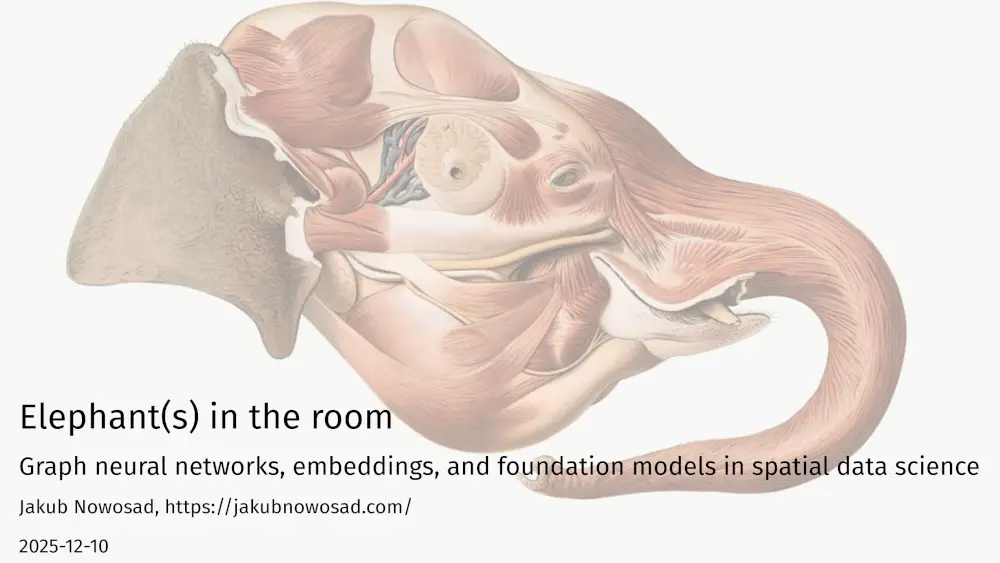
Slides: https://jakubnowosad.com/agforum2025 This presentation covered three interconnected deep learning concepts appearing in spatial data science work.

Slides: https://jakubnowosad.com/agforum2025 This presentation covered three interconnected deep learning concepts appearing in spatial data science work.
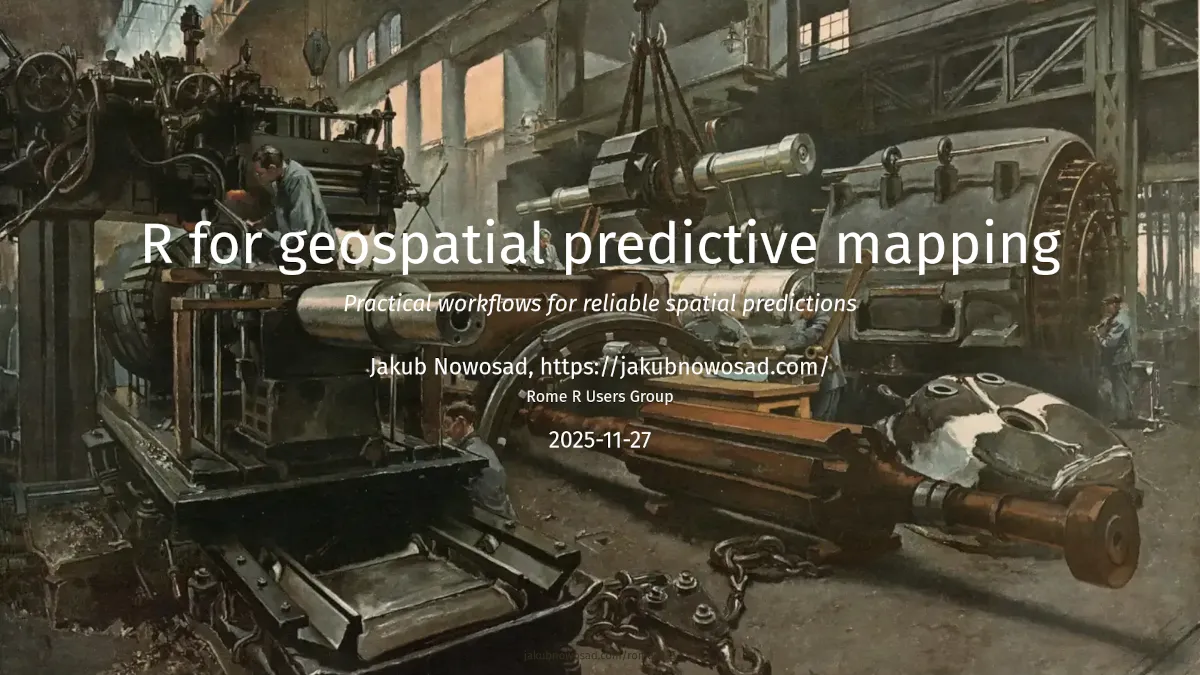
Slides: https://jakubnowosad.com/rome2025 Video recording: https://youtu.be/uZe7thh80MI Reproducible code: https://jakubnowosad.com/rome2025/index.R Geospatial predictive mapping is a common task across many domains, aiming to produce continuous surfaces from point observations and spatial predictors.

Last year, I received a grant from the Marie Skłodowska-Curie Actions Postdoctoral Fellowships (MSCA-PF) program for a project called PRISM: PReservation and RecognItion of Spatial patterns using Machine learning . Between August 2024 and August 2026, I am in the Remote Sensing and Spatial Modeling group at the University of Muenster, Germany.
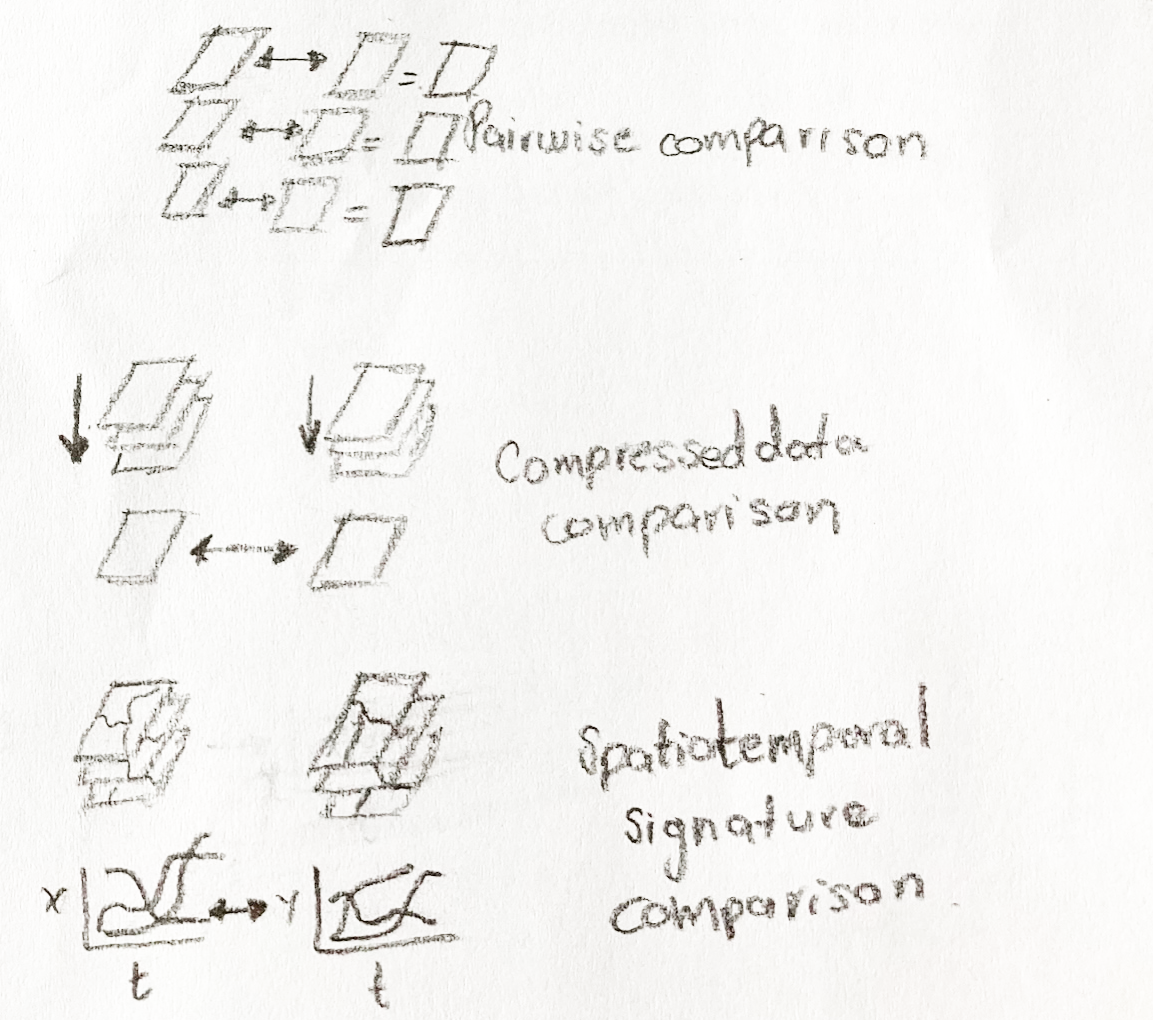
Methods for comparing spatial patterns in raster data This is the sixth part of a blog post series on comparing spatial patterns in raster data. More information about the whole series can be found in part one.
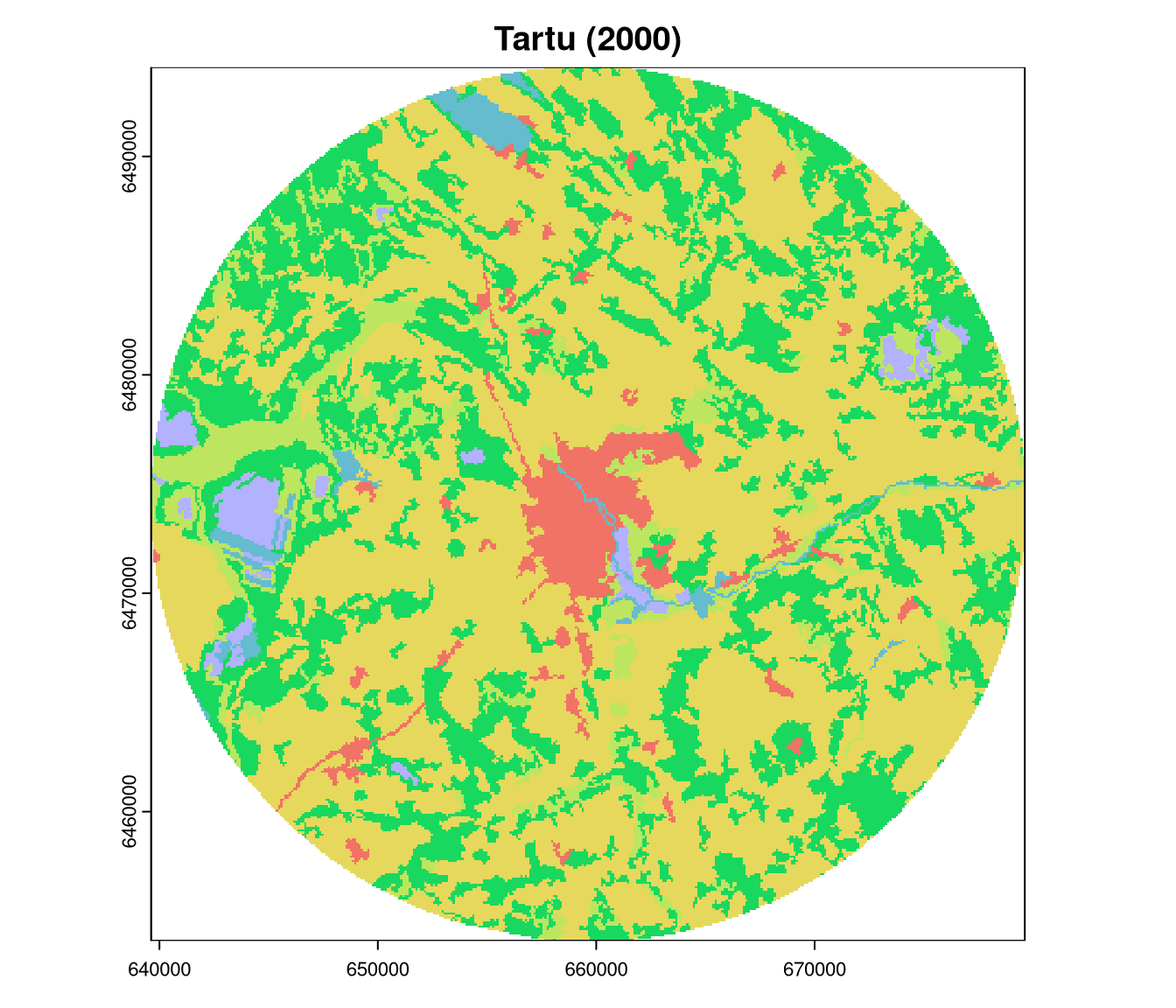
Methods for comparing spatial patterns in raster data This is the fifth part of a blog post series on comparing spatial patterns in raster data. More information about the whole series can be found in part one. This blog post focuses on comparing spatial patterns in categorical raster data for arbitrary regions.

Methods for comparing spatial patterns in raster data This is the fourth part of a blog post series on comparing spatial patterns in raster data. More information about the whole series can be found in part one. This blog post focuses on the comparison of spatial patterns in categorical raster data for overlapping regions.
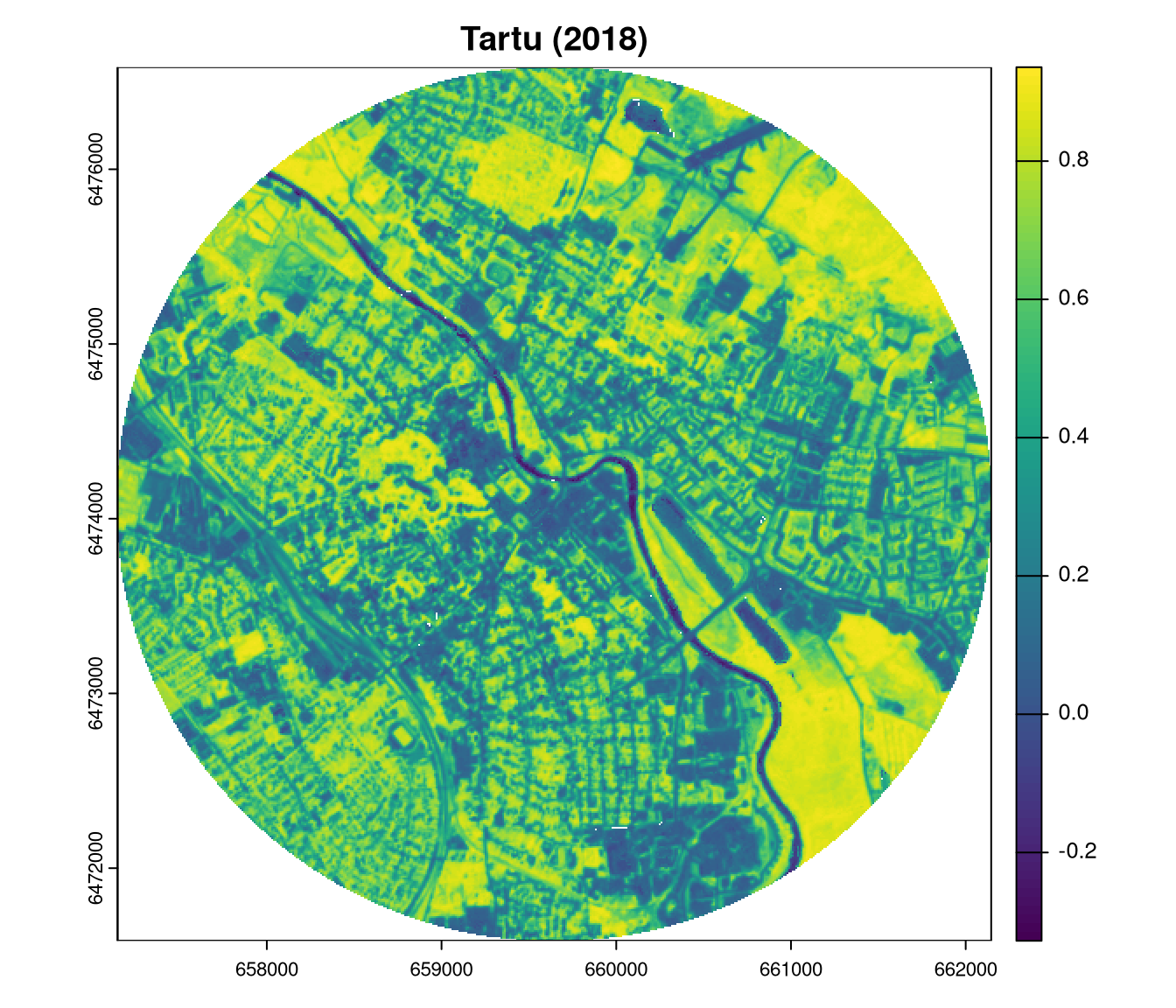
Methods for comparing spatial patterns in raster data This is the third part of a blog post series on comparing spatial patterns in raster data. More information about the whole series can be found in part one. This blog post focuses on the comparison of spatial patterns in continuous raster data for arbitrary regions. Thus, the shown methods require two continuous rasters, which may have different extents, resolutions, etc.

Methods for comparing spatial patterns in raster data This is the second part of a blog post series on comparing spatial patterns in raster data. More information about the whole series can be found in part one.

Methods for comparing spatial patterns in raster data This is the first part of a blog post series on comparing spatial patterns in raster data.

I received a grant from the Marie Skłodowska-Curie Actions Postdoctoral Fellowships (MSCA-PF) program: between August 2024 and August of 2026, I will be at the University of Muenster, Germany, working on a project named PRISM: PReservation and RecognItion of Spatial patterns using Machine learning . The project’s primary goal is to develop and compare methods for validating and including spatial patterns in machine learning.

The spatial kinetic Ising model is a simple model of spatial patterns that can be used to simulate the evolution of spatial patterns over time. Its two main parameters are B and J, which control the external pressure and the local autocorrelation tendency, respectively. Both of them have a strong effect on the results of the spatial kinetic Ising model. Thus, the question is how to find the best values of these parameters for a given situation.